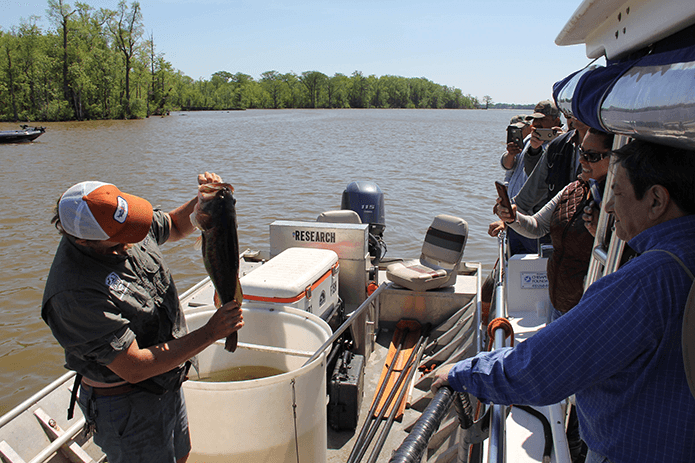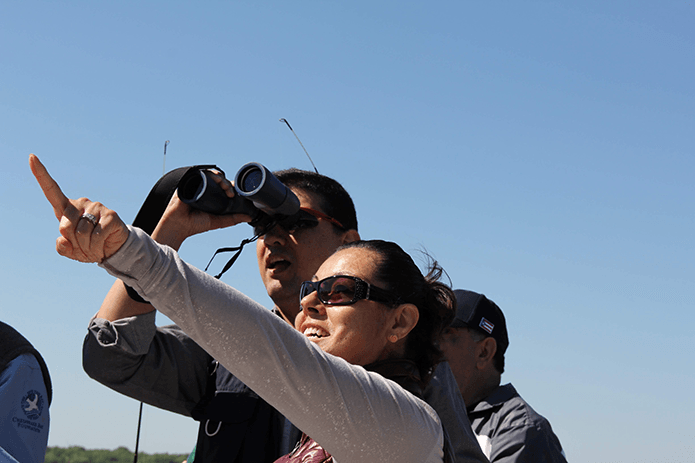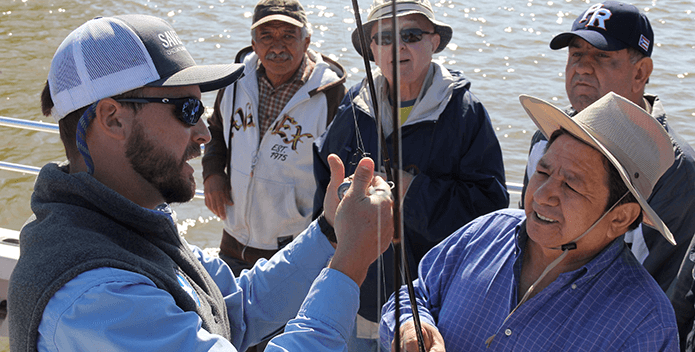Out on the water, it seems like a magic moment could always lie just around the bend. Earlier this spring I was on a fishing trip with local Hispanic leaders aboard the Baywatcher, CBF's James River education vessel.
We were just getting ready to drop our lines into Herring Creek, a tidal tributary fringed by green marshland and knobby cypress trees. Under a bright blue sky, the water sparkled with sunlight. We spotted a bald eagle nest high in a loblolly pine, and a pair of ospreys circled and dove after fish.
Everyone aboard just stopped to take it in.
"It was heaven," Alberto Torres said of the day on the water.
While we caught plenty of small catfish in the creek's deep holes, we didn't see the amazing diversity of life under the water until we met up with a Virginia Department of Game and Inland Fisheries skiff. They set up an electrofishing rig, which briefly stuns fish in the river with an electrical current. These fish are counted for fish population surveys that are used to inform fishing regulations and other conservation practices.
The variety was amazing—toothy bowfin, silvery perch, speckled crappie, a near-golden carp, and a true lunker largemouth bass, among other species. Realizing what lies below the surface can make anyone want to protect the river.

Virginia Department of Game and Inland Fisheries staff discusses fish ecology on a CBF field experience with the Richmond, VA Hispanic community.
Kenny Fletcher
In the end, the day ended up being about much more than just fishing and spotting wildlife. Out on the water, we discussed how we can work together to restore our waterways. "We can help. Count on us and we will help with anything that you guys do," Torres said.
We're all in this together, and together we'll make it happen.

Juan and Martha Santacoloma spot an osprey on Herring Creek outside Richmond, VA.
Kenny Fletcher
Juan and Martha Santacoloma spot eagles and osprey on Herring Creek. Juan, who works to engage immigrant communities for Chesterfield County, said outreach to the Hispanic population is critical. "We are here to improve our community, but we need you to please reach out to educate us so we can learn more about our community, our environment, our county, and right now our country," he said.




